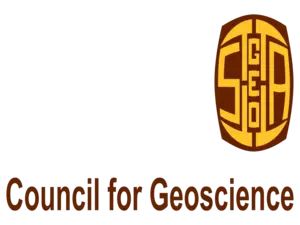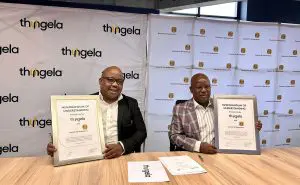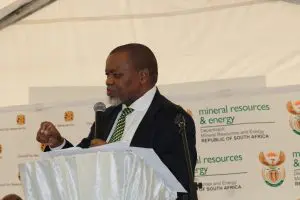The Council for Geoscience Field School celebrated its ten year anniversary with the successful completion of the 2015 field mapping training programme. The growth and transformation of the field school programme over the decade has been significant. Initially, the field school was designed as a two-year programme linked to the Annual Technical Programme targeting mostly recently employed geoscientists. These scientists would spend their time at the Limpopo regional office benefitting educationally from the vast economic mineral deposits of the province (for example gold, platinum and copper) and the highly complex, high-grade tectonometamorphic terrane, the Limpopo Belt. During this time, the field school participants would work on map compilations and the writing of complementary map explanations. This work was undertaken in addition to courses on microscopy, GIS and 4×4 driving, all of which would provide the participants with the vital knowledge and skills needed to ensure a successful start to their careers.
In recent years, the field school has transformed into a compact one-month programme. This shorter version retains many of the objectives of the earlier programme and also includes a geological road trip across the South African stratigraphy. The 2015 field school was a highly ambitious programme that covered a wide range of geoscientific topics and included an even wider range of participants, largely interns, from all the CGS offices.
South African stratigraphy trip
The tenth annual field school began on 18 October 2015. Participants travelled east from the CGS head office in Silverton over most of the Transvaal Supergroup to near Sabie where they observed spectacular stromatolites within the Malmani Subgroup. The journey continued to the best preserved remnants of early Earth, the Barberton Greenstone Belt. From there, the group travelled south over Archaean granites straddling the Swaziland border before ending the first day in the town of Ermelo. On the second day, the Pongola Supergroup was covered which included visits to the abandoned gold mines near Denny Dalton and an impressive ca 2 500 Ma unconformity between Pongola and the Karoo.
The third day saw the team travelling further south along the Wild Coast into the Natal sector of the Namaqua-Natal Mobile Belt with a stopover to investigate coastal wave action at Hole in the Wall, Coffee Bay. On the fourth and fifth days, the intrepid explorers ventured into and across the Cape Fold Belt. Various structural features associated with the formation and breakup of Gondwana were discussed and thoroughly debated. The trip ended in Cape Town with a tour of the Cape Peninsula geology and a lecture series on GIS and advanced geological mapping.
Mapping the Richtersveld
The mapping region chosen for the 2015 field school is near the small town of Eksteenfontein in the Gariep Belt, south of the Ais-Ais/Richtersveld Transfrontier Park. Three mapping areas were defined and encompassed much of the Port Nolloth zone, which forms part of the Gariep Supergroup. Rocks of this region highlight a complicated depositional and tectonic history associated with the breakup of Rodinia and the formation of Gondwana when the Adamastor Ocean opened, allowing for the deposition of the Gariep rocks. These rocks were later deformed during continental accretion and basin closure. The Gariep rocks consist largely of siliciclastic fan deposit quartzites, glacially derived diamictites and various carbonaceous rocks including limestone, dolomite and marble. The ca 1 900 Ma Vioolsdrift granite-gneiss forms the basement to the Gariep rocks with the lower sequence being intruded by ca 720 Ma Gannakouriep dyke swarms. The wide variety of lithological units and structural fabrics make this a tough, but ideal, learning environment.
Richtersveld Science Week
An important facet of the mapping work in the Richtersveld is the CGS Field School-driven Richtersveld Science Week. During this week, some of the geoscientists participating in the field school spent time with learners from the surrounding schools. This is an extremely isolated location and schools in this region are often forgotten during educational outreach programmes. The schools visited included Stephen Malherbe Primary School in Eksteenfontein, Johan Hein Primary School in Kuboes and the Alexander Bay High School.
Topics for the school visits included an interactive lecture series on Earth Science, life as a geoscientist and information on becoming an earth scientist. A wide range of in-house designed scientific posters were presented to the schools and a series of experiments, created by Haajierah Mosavel, were demonstrated highlighting how volcanoes and sedimentary processes function. The culmination of the visits was undoubtedly the donation of nine CGS refurbished computers and several stationery packs to the schools. These computers are equipped with open-source office, graphic design and GIS software. It is envisioned that these computers may provide learners with an effective tool to kick-start their academic development.
Into the future
The CGS Field School strives to equip early career geoscientists with the best possible skills needed to begin their careers in the geosciences. The field school has come a long way these past ten years and is looking forward to growing together with an evolving Earth and to developing the skills necessary to ensure the sustainable growth of the geosciences in South Africa.
Visit cgsfieldschool.blogspot.com set up by regular trainer Taufeeq Dhansay.
For more information contact:
Nick Baglow
Geoscience Mapping
+27 (0)15 295 3471
Field school participants being acquainted with the Gariep Belt rocks near Eksteenfontein.
Top left – Short workshop with teachers at Alexander Bay High School. Top right – Cindy Petersen interacting with learners of the Stephen Malherbe Primary School in Eksteenfontein. Bottom left – Lwazi Magadaza giving a short course on remote sensing. Bottom right – Conrad Groenewald explaining the life of a geoscientist.




